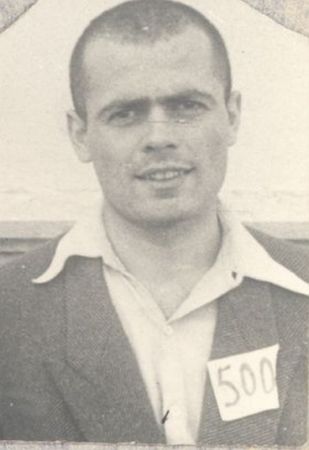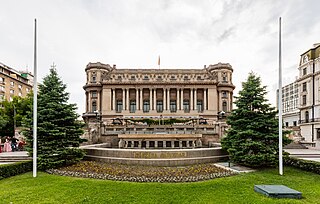
Șerban Vodă Cemetery is the largest and most famous cemetery in Bucharest, Romania.
Oglinda, also known as Începutul adevărului, is a controversial 1993 film by Romanian director Sergiu Nicolaescu. It depicts Romania during World War II, focusing on the Royal Coup of 23 August 1944 that toppled Ion Antonescu, the Axis-allied Conducător and authoritarian Prime Minister.

The Sighet Prison, located in the city of Sighetu Marmației, Maramureș County, Romania, was used by Romania to hold criminals, prisoners of war, and political prisoners. It is now the site of the Sighet Memorial Museum, part of the Memorial of the Victims of Communism.

Carol I Park is a public park in Bucharest, Romania, named after King Carol I of Romania. A French garden located in the southern-central area of Bucharest, partly on Filaret hill, originally capable of hosting various exhibitions, it suffered considerable modifications during the communist regime, including a name change to Parcul Libertății.

Constantin Titel Petrescu was a Romanian politician and lawyer. He was the leader of the Romanian Social Democratic Party.

Eugen Țurcanu was a Romanian criminal who led a group that terrorized their fellow inmates during the late 1940's at Pitești Prison in Pitești, Romania. In a well publicized trial, Turcanu and fifteen of his accomplices were convicted in the deaths of several inmates and executed.

The Jilava massacre took place during the night of November 26, 1940, at Jilava Prison, near Bucharest, Romania. Sixty-four political detainees were killed by the Iron Guard (Legion), with further high-profile assassinations in the immediate aftermath. It came about halfway through the fascist National Legionary State and led to the first open clash between the Guard and conducător Ion Antonescu, who ousted the Legion from power in January 1941.

Gherla Prison is a penitentiary located in the Romanian city of Gherla, in Cluj County. The prison dates from 1785; it is infamous for the treatment of its political inmates, especially during the Communist regime. In Romanian slang the generic word for a prison is "gherlǎ", after the institution.

Aiud Prison is a prison complex in Aiud, Alba County, located in central Transylvania, Romania. It is infamous for the treatment of its political inmates, especially during World War II under the rule of Ion Antonescu, and later under the Communist regime.

Râmnicu Sărat Prison is a former prison located in Râmnicu Sărat, Buzău County, Romania. The building is listed as a historic monument by Romania's Ministry of Culture and Religious Affairs.

The Palace of the National Military Circle, also known as the Officers' Circle Palace is located on Constantin Mile street in Bucharest, Romania. It was built in 1911, based on plans drawn by chief architect Dimitrie Maimarolu, using French neoclassical style. The beneficiary was the Officers' Circle of the Bucharest military garrison, which was founded in 1876.

Prince Alexandru Cantacuzino was a Romanian lawyer and politician, a leading member of the Legionary Movement, and a close collaborator of Legionary leader Corneliu Zelea Codreanu. He notably devised a plot to overthrow Carol II, King of Romania, a plan that would later be taken over by Legionary leader and later Vice President of the Council of Ministers Horia Sima. Cantacuzino was killed on September 22, 1939, at the prison in Râmnicu Sărat, during a retaliation operation ordered by Carol II following the assassination of Prime Minister Armand Călinescu.
Events from the year 1947 in Romania. The year saw the abdication of Michael I of Romania and foundation of the Romanian People's Republic.
Events from the year 1953 in Romania. The year saw the death of Carol II.
Events from the year 1954 in Romania. The year was marked by the 1954 Romanian blizzard.

Jilava Prison is a prison located in Jilava, a village south of Bucharest, Romania.
















